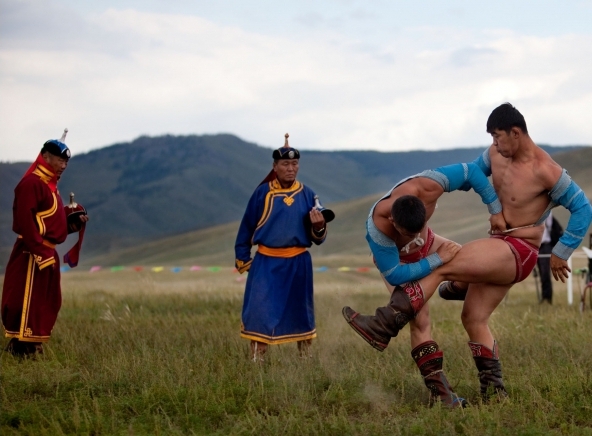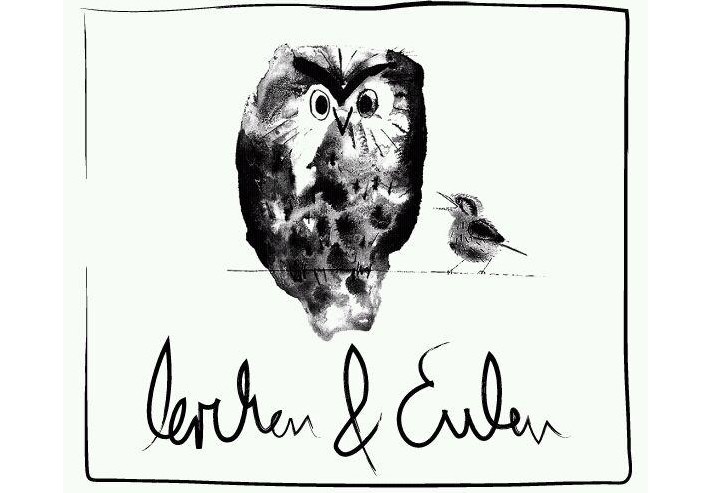The Mongolian Wrestling, as its name implies, comes from Mongalia where it is called Böhk. It is nonetheless practised in many other countries (e.g. Kazakhstan, Turkmenistan) where the Mongolians have left a cultural footprint in the last centuries. Along with riding and archery, it belongs to the “manly sports”.
Originally, it was created to bring runaway horses to the ground. How far this is exiled to the realm of legends, is no longer known to anyone. The specialty of Mongolian Wrestling is, in addition to the traditional attire which consists of a pair of underpants, sleeves and boots in multiple colours, the lack of weight classes. Anyone can fight anyone!
The special rules can vary from place to place. In some areas, for example, it is forbidden to touch the legs of the opponent with the arms. Chokes and punches are not allowed in any set of rules. The reason for the strange garb which, despite covering the legs and crotch, reveals the chest can be explained with a historical story in which a woman disguised as a man and defeated all her male counterparts. This was not pleasing to the eyes, which is why men now fight topless in order to prove his manhood.
The most important tournament is held once a year in the Mongolian capital, Ulaanbaatar, during the national holiday Naadam. Here, all wrestlers meet to compete against one another in a K.O. system. The fights are not time-limited and there are even some which lasted over several hours! The winner of the tournament is rewarded with a prize in the form of cattle and gold. Depending on the success of the wrestler, he bears a title which range from birds, camels and wolfs to knights. Before the fight, both contestants stretch out their arms, symbolising a mighty eagle.
When the fight is over and decided, the loser must “fly” under the stretched arms of the winner. This is a firm component for the inferior wrestler to show his respect to the winner. Wrestling fight is up till today the number one sport in Mongolia and many boys dream to one day become a triumphant winner.
Copyright and Source: http://www.mongolei.net/land/naadam.html and http://de.wikipedia.org/wiki/Mongolisches_Ringen






